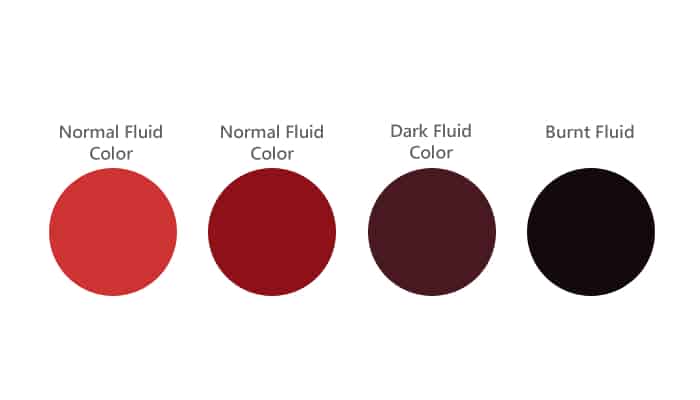Understanding Transmission Fluid for Your Dodge Ram 2500
When it comes to keeping your 2002 Dodge Ram 2500 running smoothly, one of the most critical components is the transmission fluid. This fluid is essential for lubricating the moving parts of your transmission, ensuring that everything operates efficiently. Using the right type of transmission fluid is not just a recommendation; it’s a necessity for the longevity and performance of your vehicle.
Manufacturer’s Recommendations
| Popular posts |
|---|
| What to do to prolong the life of your manual gearbox |
| Automatic transmission: what it is, how it works |
For the 2002 Dodge Ram 2500, the manufacturer specifically recommends using **ATF+4** transmission fluid. This fluid is formulated to meet the unique requirements of Chrysler vehicles, providing the necessary protection and performance for your transmission.
Why ATF+4?
Using ATF+4 is crucial for several reasons:
- Compatibility: ATF+4 is designed to work seamlessly with the transmission components in your Ram 2500. Using a different type of fluid can lead to poor performance or even damage.
- Temperature Stability: This fluid is engineered to perform well under a wide range of temperatures, ensuring that your transmission operates smoothly whether you’re in the heat of summer or the chill of winter.
- Friction Properties: ATF+4 provides excellent friction characteristics, which helps in smooth shifting and overall transmission responsiveness.
- Protection Against Wear: The fluid contains additives that help protect the internal components of the transmission from wear and tear, extending its lifespan.
Specifications of ATF+4
Understanding the specifications of ATF+4 can help you appreciate why it’s the right choice for your truck. Here are some key specifications:
- Viscosity: ATF+4 has a viscosity rating that ensures proper flow and lubrication at various temperatures.
- Fluid Type: It is a synthetic blend, which means it offers superior performance compared to conventional fluids.
- Color: Typically, ATF+4 is a reddish color, making it easy to identify in case of leaks.
- Performance Standards: It meets or exceeds the performance standards set by Chrysler, ensuring it’s suitable for your vehicle.
Where to Find ATF+4
You can find ATF+4 at most auto parts stores, dealerships, or online retailers. Always ensure that you are purchasing from a reputable source to avoid counterfeit products that may not meet the necessary specifications.
In summary, using the correct transmission fluid is vital for the health of your 2002 Dodge Ram 2500. Stick to the manufacturer’s recommendation of ATF+4 to ensure your transmission operates smoothly and efficiently.
Recommended Oil Brands for Your Dodge Ram 2500 Transmission Fluid
When it comes to choosing the right transmission fluid for your 2002 Dodge Ram 2500, the brand you select can make a significant difference in performance and longevity. Many owners have shared their experiences and recommendations on various forums, providing valuable insights into which brands stand out. Here, we’ll explore some of the most recommended oil brands based on owner feedback and real-world experiences.
Popular Brands Among Owners
Based on numerous discussions and reviews from Dodge Ram owners, several brands consistently receive high praise for their quality and performance. Here’s a list of some of the top contenders:
- Mopar ATF+4: As the manufacturer’s recommended fluid, Mopar ATF+4 is a go-to choice for many owners. Users report that it provides excellent shifting performance and helps maintain the transmission’s health over time.
- Valvoline MaxLife ATF: Valvoline’s MaxLife ATF is another popular option. Many users appreciate its synthetic blend, which offers enhanced protection and performance. Owners have noted smoother shifts and improved responsiveness after switching to this fluid.
- Castrol Transmax ATF: Castrol has a solid reputation in the automotive community, and their Transmax ATF is no exception. Users have reported that it performs well in various driving conditions, providing reliable protection and performance.
- Royal Purple Max ATF: Known for its high-performance products, Royal Purple’s Max ATF is favored by those who want a premium option. Owners have shared experiences of improved shifting and overall transmission performance after using this fluid.
- Amsoil Synthetic ATF: Amsoil is well-regarded for its synthetic oils, and their ATF is no different. Many users have highlighted its ability to withstand high temperatures and maintain performance, making it a solid choice for heavy-duty applications.
What Owners Are Saying
Feedback from various forums and discussion boards reveals a wealth of information regarding the performance of these brands. Here are some common themes and insights shared by owners:
- Performance Improvement: Many owners report noticeable improvements in shifting smoothness and responsiveness after switching to high-quality transmission fluids like Valvoline or Royal Purple. Users often mention that the difference is particularly noticeable during heavy towing or off-road driving.
- Longevity: Several users have shared their experiences with transmission longevity when using recommended brands. Many claim that using Mopar ATF+4 or Amsoil has contributed to their transmissions lasting well beyond the expected lifespan, even under demanding conditions.
- Temperature Management: Owners frequently discuss how certain fluids, particularly synthetic options like Castrol and Royal Purple, help manage transmission temperatures better. This is crucial for those who use their trucks for towing or in hot climates.
- Cost vs. Quality: While some owners are willing to pay a premium for brands like Royal Purple, others have found that more affordable options like Valvoline MaxLife still deliver excellent performance. This has led to discussions about finding the right balance between cost and quality.
Where to Buy
Most of these recommended brands are readily available at auto parts stores, big-box retailers, and online platforms. Here are some tips for purchasing:
- Local Auto Parts Stores: Stores like AutoZone, O’Reilly Auto Parts, and NAPA often stock these brands, allowing you to check for availability in person.
- Online Retailers: Websites like Amazon and RockAuto typically have a wide selection of transmission fluids, often at competitive prices. Be sure to check reviews and seller ratings.
- Dealerships: If you prefer to stick with the manufacturer’s recommendation, your local Dodge dealership will have Mopar ATF+4 available, though it may come at a premium price.
In summary, choosing the right transmission fluid brand for your 2002 Dodge Ram 2500 can significantly impact your truck’s performance and longevity. By considering the experiences of fellow owners and sticking to reputable brands, you can ensure your transmission stays in top shape for years to come.
Change Interval for Your Dodge Ram 2500 Transmission Fluid
Maintaining your 2002 Dodge Ram 2500’s transmission fluid is crucial for ensuring optimal performance and longevity. The change interval for transmission fluid can vary based on driving conditions, usage, and manufacturer recommendations. Understanding when to change your transmission fluid can save you from costly repairs down the road.
Recommended Change Intervals
For the 2002 Dodge Ram 2500, the general recommendation for changing the transmission fluid is as follows:
- Regular Driving Conditions: Every 30,000 to 60,000 miles (48,000 to 96,000 km) is a common guideline for standard driving conditions. This interval can help maintain the fluid’s effectiveness and protect the transmission.
- Towing or Heavy Loads: If you frequently tow heavy loads or drive in severe conditions, such as extreme heat or stop-and-go traffic, consider changing the fluid every 15,000 to 30,000 miles (24,000 to 48,000 km). This is crucial for preventing overheating and wear.
- Fluid Condition Monitoring: Some owners opt to monitor the condition of their transmission fluid visually or through performance. If you notice a burnt smell, dark coloration, or metal particles, it’s time to change the fluid, regardless of mileage.
Partial Transmission Oil Changes
In many cases, a full transmission fluid change involves removing the transmission pan, which can be a labor-intensive process. This is where partial transmission oil changes come into play. Here’s what you need to know:
What is a Partial Transmission Oil Change?
A partial transmission oil change involves draining a portion of the old fluid and replacing it with new fluid without removing the entire transmission pan. This method can be beneficial for several reasons:
- Less Labor-Intensive: A partial change is generally easier and quicker to perform, making it a more accessible option for many owners.
- Cost-Effective: Since it requires less labor, a partial change can be more affordable than a full fluid change.
- Regular Maintenance: Performing partial changes more frequently can help keep the transmission fluid cleaner and more effective over time.
Justification for Partial Changes
Statistical data and expert opinions support the practice of partial transmission fluid changes. According to the Automatic Transmission Rebuilders Association (ATRA), regular maintenance, including partial fluid changes, can significantly extend the life of a transmission.
- Fluid Contamination: Over time, transmission fluid can become contaminated with debris and wear particles. A partial change helps to remove some of this contamination, improving fluid quality.
- Fluid Degradation: Transmission fluid breaks down over time due to heat and pressure. Regular partial changes can help maintain the fluid’s properties, ensuring it continues to protect the transmission effectively.
- Owner Feedback: Many Dodge Ram owners on forums report that performing partial changes regularly has helped them avoid major transmission issues, supporting the idea that consistent maintenance pays off.
By understanding the recommended change intervals and the benefits of partial transmission oil changes, you can take proactive steps to ensure your 2002 Dodge Ram 2500 remains in excellent working condition.
What Color Should Transmission Fluid Be?


